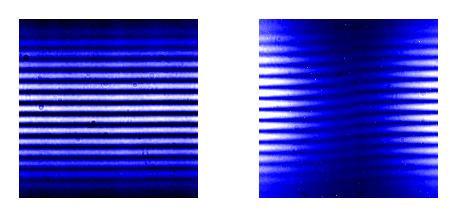21-JUL-2017
Researchers at IMS and their coworkers have shown theoretically and experimentally that a high energy electron in circular/spiral motion radiates vortex photons in the entire wavelength range from the radio-wave to the gamma-rays. This greatly broadens application spectra of the vortex photons in the field of physical science. Moreover, the finding indicates that vortex photons are ubiquitous in the universe. It paves a way to a completely new research field, natural vortex photon science.
Light is a wave. As sometimes it is called an electromagnetic wave, electric and magnetic fields are oscillating and the oscillations are propagating in space. Normally, light has a plane wave front. In contrast, optical vortex possesses helical wave front and carries orbital angular momentum. Existence of such peculiar photons was theoretically predicted about 25 years ago. Nowadays, such photons can be readily produced in laboratories by using special optical devises, although the wavelengths are limited in the vicinity of the visible light. Researchers are exploring their applications in nanotechnology, imaging and information/communication technologies. On the other hand, a natural elementary process which is capable of producing vortex photons has not been known, except for a few theoretical proposals that normal photons may be converted to vortex photons in a strong gravitational field around a rotating black hall or as passing through inhomogeneous interstellar media.
About 10 years ago, it was theoretically predicted that an undulator, a device widely used in modern synchrotron light sources, is capable of producing vortex photons in the X-ray range. This was experimentally confirmed several years later at a German synchrotron. However, a majority of significant characteristics of optical vortex generation has remained unverified. Researchers at IMS and their coworkers theoretically investigated this process and have found that it is based on a more general and elementary process. They have shown that an electron in circular or spiral motion radiates vortex photons. Since this process is the basis of various important radiation processes in the astrophysics or the plasma physics, such as cyclotron radiation, synchrotron radiation or Compton scattering, it has been described in many textbooks or research papers. However, so far, there has been no discussion on the vortex nature of this radiation. The wavelength of this radiation extends from the radio wave to the gamma-rays, depending on the physical condition. This new finding indicates that vortex photons are produced in various situations in the universe, in the entire wavelength range.
Furthermore, the researchers at IMS and their coworkers succeeded in a precise experimental observation of the undulator radiation from a synchrotron light source, UVSOR-III, for the first time (Figure). They observed the UV light emitted from an electron beam in spiral motion, and indicated that a special structure called phase singularity exists in the center of the photon beam from the undulator. Moreover, higher energy photons have been shown to carry larger angular momenta. These measurements definitely support the theoretical prediction.
Professor Masahiro Katoh (IMS) says "Vortex photons should be ubiquitous in the universe. What kind of role do they play in nature? Our achievement opens up a totally new research field."
###
This research was supported by the Grants-in-Aid for Scientific Research (KAKENHI) from the Japan Society for the Promotion of Science.
*1 Synchrotron Radiation
Electromagnetic waves radiated by high energy electrons in a magnetic field.
*2 UVSOR-III
UVSOR-III is a synchrotron radiation facility providing high brightness UV and VUV radiations, located in IMS, Aichi Prefecture, Japan.
*3 Undulators
An undulator produces an alternating magnetic field and high energy electrons undergo sinusoidal or spiral motions and radiate monochromatic radiations.
Information of the paper: "Angular Momentum of Twisted Radiation from an Electron in Spiral Motion", Physical Review Letters,
"Helical Phase Structure of Radiation from an Electron in Circular Motion", Scientific Reports
Research Group: IMS (Institute for Molecular Science), Nagoya University, Hiroshima University, Muroran Institute of Technology, University of Tokyo, Saga Light Source, KEK (High Energy Accelerator Research Organization), AIST (National Institute of Advanced Industrial Science and Technology)
Financial Supports: Grants-in-Aid for Scientific Research (KAKENHI) from the Japan Society for the Promotion of Science















